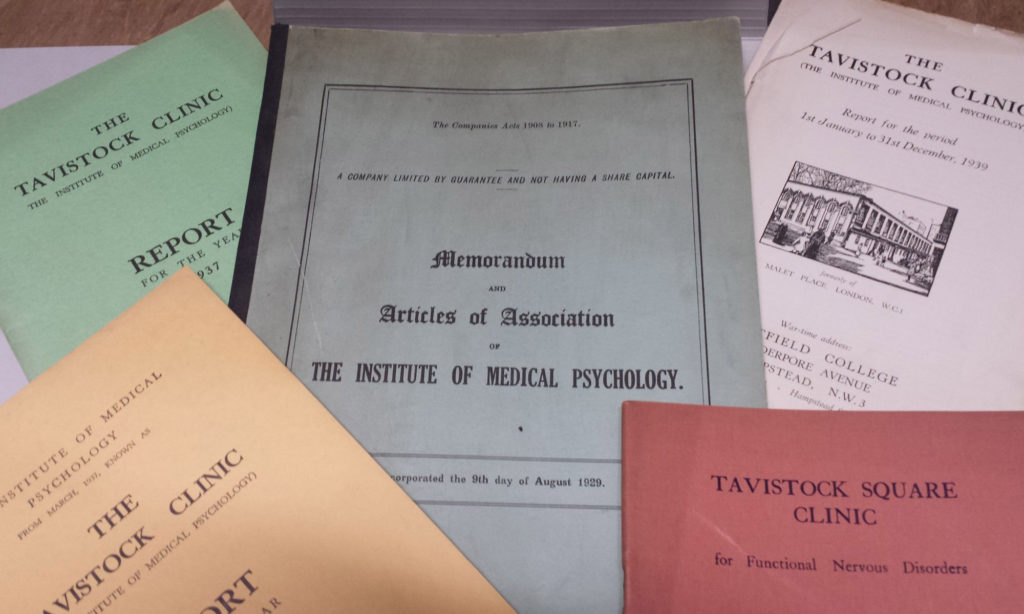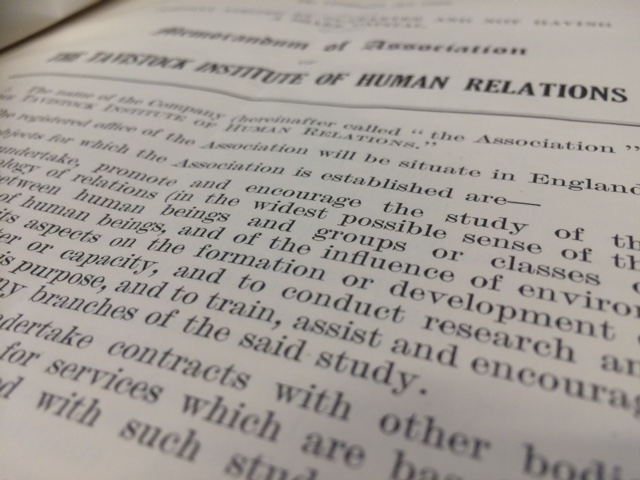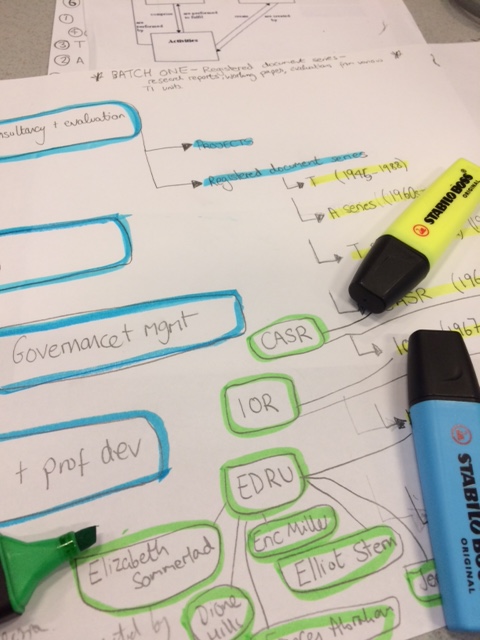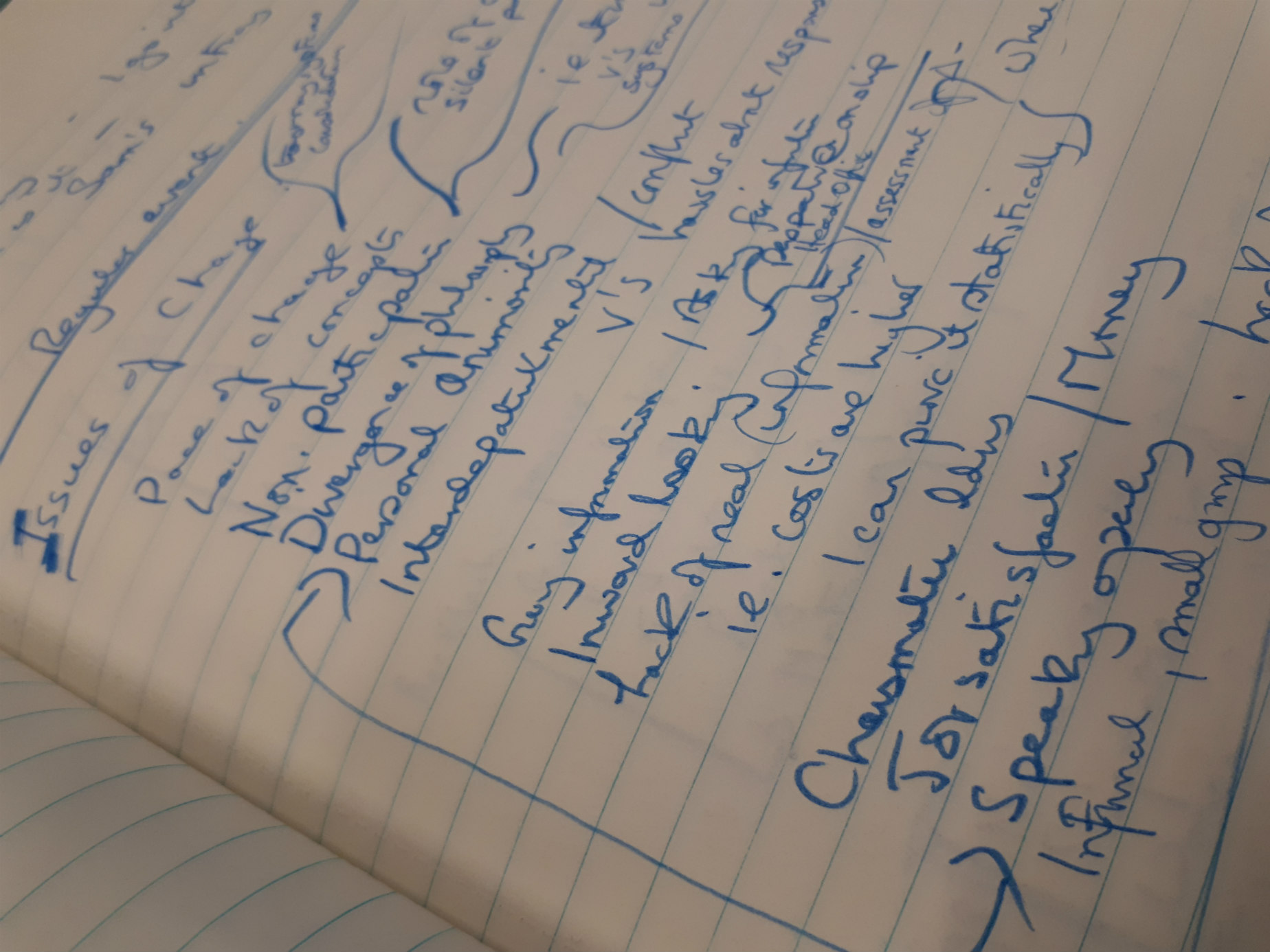This is a conversation between Hannah Eyles, Tavistock Institute archivist and Amy Proctor, the Tavistock Clinic archivist.
In 2016 London Metropolitan Archives (LMA) were successful in securing a Wellcome Trust grant to undertake an innovative two year project to catalogue and index the corporate and clinical records of the Tavistock and Portman NHS Foundation Trust, which are held on deposit at the LMA. The Tavistock and Portman were originally two clinics established in 1920 and 1933 respectively and from their very beginnings were recognised as leading pioneers in the advance of psychotherapy practice and developmental theory.

The Tavistock Institute of Human Relations was born out of the Tavistock Clinic, with a departure in methodology and research focus which saw the pioneering application of psychoanalytic and open systems concepts to group and organisational life and relations. As the Institute celebrates its 70th anniversary, the archives of both the Clinic and the Institute are undergoing major projects to catalogue and release historical records for research.

[Hannah]: It is by chance that both these organisations whose early histories were linked have found both their archives being catalogued simultaneously. This has provided an opportunity and a platform for an informal reflective and supportive conversation between us as the archivists involved, a conversation that this blog post hopes to capture and document in its raw form. This conversation not only allows us to voice our familiarities with the archives and define the characteristics of our collections, but also provides an opportunity to listen to the thoughts of another archivist and find interest and ideas in what they have to say. In framing our exploration in this way, we not only get to share ideas around archival practice, technique, and arrangement, but we have a platform to voice the quirks and the stories of the archives themselves.
[Amy Proctor]: Both archives contain an amazing wealth of information and to pick out a particular theme or a particular project to focus upon is so very difficult. It has been very interesting to hear and share our experiences of the unique challenges and decisions that have been made in the approach to how both collections are being catalogued to ensure that it is truly reflective of the unique ways in which both organisations developed and evolved.
[Hannah]: I think Amy would agree that neither collection lends itself to a traditional hierarchical archival structure. The Tavistock archive, with its wealth of discrete projects and individual record creators, lends itself much more closely to a series model catalogue. Rather than structuring the materials based on their provenance (creator), the series system sees more of a network of records with the ability to navigate between projects and the biographical authority files of the individuals who worked on them. This allows much greater flexibility to represent the work of the Institute as it evolved over the decades.

[Amy Proctor]: Similarly with the T&P the aim of the project is to go beyond creating a traditional archive list but to open up the content of the clinical archives for academic research by creating a fully searchable database extrapolating information from each file. To this end a unique approach has been taken involving a period of detailed research in order to inform the decision about what information is recorded in the database, while taking into account the challenges of changing approaches to record keeping by the creator over different periods of time.
[Hannah]: As archivists, we constantly face the challenges of adapting our practices to reflect the true nature of the materials with which we are working. The Tavistock Institute collection differs very much from the T&P collection in the sheer variety of records within its remit. I have come across everything from field notes rapidly scrawled on whatever was to hand- serviettes and old shopping lists to name only a couple- through to official reports for government departments. One of the joys of the collection is its materiality and the ways in which the materials reflect the lives and personalities of the record creators.
[Amy Proctor]: It is indeed fascinating how there can be so much information conveyed within simply the structure or the arrangement of archival records – the recognition of the same handwriting over and over again almost brings to the words the voice of the record creator, the use of particular words or phrases by the same hand conveys a sense of the character of the creator. Similarly the introduction of pre-printed forms shows an effort to identify and gather information to support research or analysis and how these forms change over time reflect changing contemporary interests.
[Hannah]: But the records not only reflect their creator, they document the concerns and beliefs of society. The Tavistock collection covers everything from projects during and after the Second World War, working with the army and returning Prisoners of War, to the rise of post-war consumerism and industry, to social and cultural changes within the family, to the development of technology and ways in which organisations coped with such change. The story documented and told through the Tavistock records is representative of the story of society more generally, and I think it is interesting to observe the obvious shifts in concerns and focus throughout the records.
[Amy Proctor]: Yes, this is also the case with the T&P clinicians’ files which contain a much wider social narrative than simply being a record of the treatment of an individual.
[Hannah]: In all, though, both archives very much have the ‘person’ at the centre of the materials. The Tavistock Institute developed from a recognition that the structures of environment, society, politics, and culture- in other words the surroundings of the individual- had a deep impact on the life, work and health of the individual. The projects undertaken and documented throughout the history of the Institute look towards changing and adapting these surroundings in order to improve the quality of life of the individual, be that at work or at home.

[Amy Proctor]: Similarly the T&P archives demonstrate the value of psychotherapeutic treatment in creating not only improvement and often recovery in an individual but how that improvement has a wider impact within immediate and extended family and the wider society surrounding the individual. As the project archivist it is a privilege to be part of the process of opening up the archives of these pioneering clinics. The focus of the clinicians’ records on the individual mean they are of a sensitive nature and therefore not available for general access in order to protect the confidentiality of living individuals. Researchers should contact ask.lma@cityoflondon.gov.uk for further information.